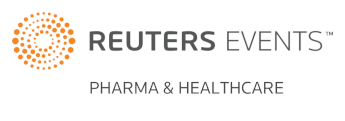Market Access & Pricing Excellence 2015
Co-create solutions with payers. Get reimbursed for real patient value.
First steps on the way to earlier access
Speed of access matters

Interest in access to new medicines never seems to abate; whether that’s because you’re a manufacturer trying to recoup sunk research and development costs, you’re managing a limited healthcare budget and you’ve got to find the money to pay for them, or a patient or carer searching for a new medicine that could add precious months of life or delay or avoid worsening of a condition. Access is not just binary though, a question about whether there is access or not, but how quickly patients can get access. Faster access is becoming a common call from patient groups and campaigns including Joining Jack and Empower Access to Medicines.
New options for early access
New options to help speed up access to unlicensed medicines were introduced in April 2014 by both the European Medicines Agency (EMA) – with Adaptive Licensing pilots - and the UK’s Healthcare Regulatory Authority (MHRA) – the Early Access to Medicines Scheme. The schemes are different, but both have at their heart the desire to speed up access for those patients with unmet needs and experience a very serious or life threatening condition. They may well be particularly suited for orphan and ultra-orphan medicines.
Key features of the schemes include:
| EMA Adaptive Licensing Pilots | MHRA Early Access to MedicinesScheme |
|---|---|
|
- Voluntary for companies, allowing companies to secure early marketing authorisation in a restricted patient group. Over time, further evidence will be gathered which can expand the number of patients covered in the license. - Access could be faster but perhaps for a smaller patient group. - The pilot goes further than just EMA and companies, with HTA agencies, patient and consumer organizations and others included too. |
- Voluntary for companies, but with no formal marketing authorisation. - A two stage process with the regulator which includes: Step I: Promising Innovation Medicine designation – an indication that a product may be eligible for EAMS based on MHRA review of early data Step II: Early access to medicines scientific opinion – this will describe benefits and risks based on data gathered from patients who will benefit from the medicine. MHRA will publish a Public Assessment Report (PAR) and a EAMS treatment protocol. These will supports prescribing decisions before licensing - Real world evidence will inform marketing authorisation in the future. - Companies are expected to provide their new medicine at no charge to the NHS. They must also pay fees for the scheme; £4,027 for a PIM, £29,000 for the scientific opinion. Fees are lower for new indications. - Scientific opinion will last for a year but can be renewed, at a cost of £14,500. - Access could be perhaps faster by a year. |
Both schemes also offer confidentiality; an important factor if the applicant companies don’t get the result that they hope for.
The MHRA scheme has a further step; Step III is licensing and rapid commissioning. The idea is that the National Institute for Health and Care Excellence (NICE) will then appraise the product, considering cost and value for money. NHS England (NHSE), as the commissioner of specialised services – services which include orphan and ultra-orphan medicines – will then pay for the product if it receives NICE approval. It’s unclear how it will work outside of England in the devolved nations.
First AL pilots
EMA says that 7 products are currently under ‘discussion’ between the EMA and the applicant companies for the pilot. Details aren’t available on the companies, and their products, that are taking part in these discussions.
EMA is still working through the full 26 applications for the pilot, so there are as many as 19 other products that could go through to the next stage.
First PIM - DCVax-L from Northwest Biotherapeutics Inc
The first product to get a positive PIM was announced in September. DCVax-L, a new type of cell therapy, is under development to treat all malignant gliomas. Northwest Biotherapeutics Inc points out that Glioblastoma multiforme (GBM) is one of the most aggressive and lethal brain tumours. They have already completed two Phase I/II trials with DCVax-L and have a Phase III trial underway. In the UK, Kings College Hospital is the lead site.
MHRA statistics suggest widespread interest in EAMS; MHRA have had 15 enquiries including teleconferences and meetings with companies, consultants and Universities. Stakeholders have said that perhaps 5-12 products a year will go through the scheme.
Tips on choosing if and when early access makes sense
Check the qualifying criteria
Both EAMS and AL have qualifying criteria and being confident that you can convince the agencies that the product meets these will be crucial to progress any further.
EMA published further guidance in September and set out 3 criteria that must be met:
1. An iterative development pathway, most likely in terms of gradual expansion of the target patient population, alongside a gradual reduction of any uncertainties in benefits and risks associated with the initial authorisation decision.
2. Real-world monitoring, data collection and use, as a complement to RCT data, in subsequent regulatory decision making. This is assisted by good definition of the target population (e.g through restricted indication), and additional risk minimisation measures, such as educational programmes, controlled access programmes, including patients registries) that promote the likelihood of real-world data collection.
3. Ability to engage HTAs and other stakeholders (patients, learned societies) in multiple discussions along the development pathway; and with proposals for how the demands of these stakeholders can be met. The Applicant should identify, according to their development plan needs, the key stakeholders that they wish to involve in the discussions.
EMA also stress that high unmet medical need is important, as well as development plans that can expand over time. Coming with a product that is in late stage development will also exclude the product.
MHRA stress the need for applicant companies to provide evidence and justify exactly why their product meets the criterion.
Having a positive PIM is needed to progress so these criteria are the gateway to the full EAMS later down the line.
Determine the importance of an early signal of innovation
Companies may benefit from the signal provided by a positive PIM in the UK scheme. They can choose to publicise that, just as Northwest Biotherapeutics Inc have done. This may be particularly useful to reassure investors about how promising the product is, and it may also help in discussions with other poayers outside of the UK. But savvy investors will still know that even a positive PIM doesn’t guarantee future revenue, but it might help differentiate a company from its competitors. The same may apply to the AL pilot if it results in an earlier license, but that may mean a restricted patient population so it may be less clear cut.
Explore the incremental costs
Companies need to work through the cost consequences of taking part in the schemes. That’s much easier for the direct costs for EAMS; fees are clearly set out as well as costs of manufacturing the product and supplying to the NHS at no charge.
More difficult is working through the indirect cost consequences; the additional research that will need to be commissioned over and above what was already planned for licensing, pharmacovigilance and meeting the requirements of HTA agencies and others. Estimates suggest that the cost of compliance with EAMS, for example, could be anything from £13,000 to £171,000 or even £3million over the lifecycle of a product.
Plus don’t forget the resourcing that a company will need to have available to fill in the various forms required, provide dossiers and support discussions with the regulators.
All these costs must be weighed up against the gains of taking part.
About the author: Leela Barham is an independent health economist and policy expert who has worked with all stakeholders across the health care system both in the UK and internationally. Leela works on a variety of issues: from the health and wellbeing of NHS staff to pricing and reimbursement of medicines and policies such as the Cancer Drugs Fund and Patient Access Schemes. Find out more here and you can contact Leela on leels@btinternet.com
Market Access & Pricing Excellence 2015
Co-create solutions with payers. Get reimbursed for real patient value.
